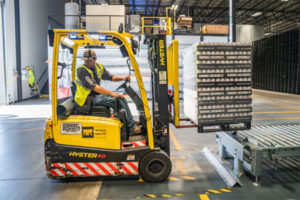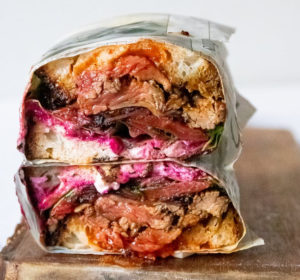CONVERT A PLANT-BASED FAMILY RECIPE INTO A RETAIL PRODUCT
Do you have a plant-based food or drink recipe that has been within your family for generations? Or have you tasted a great vegan dish or drink while travelling and would love to bring it to the UK?
It’s very easy to believe that your recipe will go viral when it hits the food and drinks market; you aren’t the first person to think that, and you definitely won’t be the last.
However, most home-cooked recipes, whether for food or drink, can’t simply be moved from the kitchen to the factory. The recipe is likely to need quite a few changes before it becomes a marketable reality.
Innovation doesn’t just come from the future it comes from the past as well. Everything that is new to the market is a recycled idea. And that’s not a bad thing. For example, we recently developed a healthy soft drink based on stinging nettles. The recipe was one that had been in the founder’s family for generations. It was originally used as cure-all and detox, and now it has been reimagined as a refreshing summer drink. With over 30 years in the F&B industry I have never seen anything that isn’t basically a reworking of an existing idea.
So, if you have a family recipe or a new take on an old flavour, how do you know if it will work? The simple answer is research.
Research
Life moves fast. What will sell today may not sell in 12 months’ time. So, research is the key to establishing whether there is a market for your idea and what the chances of success are. Start by looking online and visiting your target stores and venues. What’s the competition? Is there anything similar in the market either in the UK or Internationally? How is it selling? How is it communicated and what recipes are they using? Knowledge is strength and the more knowledge you have the stronger your chances of breaking into the market and making your idea fly.
Mass production
Once you’ve done your research and you feel confident that there is an opportunity here for your idea, the next stage is looking at mass production; after all you can’t sell into the mainstream from your kitchen.
You could hire a commercial kitchen and bring in staff to help you make the product, but that is still only going to give you limited production.
The best idea is to take your recipe to an experienced manufacturer (co-packer) that will make and fill the product for you, but before you do, you will need the help and guidance of a professional recipe developer, as what works in your home kitchen usually cannot be directly translated to mass production.
Here’s why:
 Step one: It is so important to understand before you take on any business venture that the production of your product cannot be just a few cakes or drinks here and there; it’s either all or nothing. A co-packer will be looking at volume and unless you can give them confidence this project will grow and fast, then very few will consider taking it on. They also need to believe in your product as much as you do, so before you speak to them make sure your company and brand look professional, many co-packers won’t even respond to Hotmail or Gmail addresses, so get brand ready.
Step one: It is so important to understand before you take on any business venture that the production of your product cannot be just a few cakes or drinks here and there; it’s either all or nothing. A co-packer will be looking at volume and unless you can give them confidence this project will grow and fast, then very few will consider taking it on. They also need to believe in your product as much as you do, so before you speak to them make sure your company and brand look professional, many co-packers won’t even respond to Hotmail or Gmail addresses, so get brand ready.
Another thing to remember is that many co-packers will only take on a product if it is going to be produced in its thousands (not hundreds). To ensure that can be done correctly and safely, with a reasonable shelf life and all the right information on the packaging you need to get a professional recipe developer on board to help and guide you.
 Step two: Your product could be the most delicious product in the world, sell amazingly with your friends, family and local farmer’s market, but the hardest pill many of my clients have to swallow is the recipe will simply not taste the same when produced on a massive scale.
Step two: Your product could be the most delicious product in the world, sell amazingly with your friends, family and local farmer’s market, but the hardest pill many of my clients have to swallow is the recipe will simply not taste the same when produced on a massive scale.
Your recipe at home has the option to be filled with the most expensive good quality fresh ingredients which provide the best end result, but if you want to mass produce then you may have to change ingredients to ensure the product isn’t ridiculously expensive and can be mass produced cost effectively. The most important thing to consider is that your ingredients need to have a longer shelf life to cope with the route to market, whether this is via wholesalers and physical retailers or mail order. New products can spend far longer sitting on the shelf than established brands so ensure you have that shelf life. This will save you money in the long run.
You also need to look out for allergens such as milk or peanuts as many co-packers will refuse to fill your product due to the process of informing every client of the potential exposure. But more importantly you also need to make all allergens VERY clear to consumers. Check out the top 14 allergens (https://www.food.gov.uk/safety-hygiene/food-allergy-and-intolerance), and wherever possible remove them. If not, ensure you find a co-packer that can cope with the allergens, and that your packaging makes them clear.
Novel Foods is another one to look out for; beware of ingredients that may be legal in other countries but not necessarily in the UK. Some products sold as supplements can’t be sold for mass consumption in food and drink. For this, check the Novel Foods website: food.gov.uk/business-guidance/regulated-products/novel-foods-guidance.
 Step three: Consider the shelf life of your product. For example, we know of a lady who owned her own bakery which provided skinny low-calorie alternatives to sugary cakes. It was a great product, but it only had 10 days shelf life. This meant that by the time it ended up on the retailers’ shelf it only had a few days left to be consumed. As a result, lots of stock went out of date and the brand failed. Remember new brands move slowly, no matter how good they are. So, you need to factor this in.
Step three: Consider the shelf life of your product. For example, we know of a lady who owned her own bakery which provided skinny low-calorie alternatives to sugary cakes. It was a great product, but it only had 10 days shelf life. This meant that by the time it ended up on the retailers’ shelf it only had a few days left to be consumed. As a result, lots of stock went out of date and the brand failed. Remember new brands move slowly, no matter how good they are. So, you need to factor this in.
It is important to remember that, generally, the longer the shelf life the better. Although really long shelf-life products are not viewed as healthy, so are less popular at the moment. As a new product your initial movement into the market will be slow until you get some decent listings under your belt. Often, the only other way to retain the shelf life is to put preservatives in your product, however, many wholesalers and retailers refuse to accept as part of their range. So, avoid this, if at all possible.
So, when developing your recipe, you must take into consideration whether your product can be stored for a long period of time, preferably at ambient temperatures, or if necessary, chilled. You then need to adapt your recipe to ensure it will taste just as good at the end of its shelf life as it did at the beginning. Food wastage is a big issue, environmentally and financially.
 Step Four: Getting your product’s packaging right is of primary importance and it’s a process many new start-ups overlook. Your packaging needs to be adaptable; what worked at a farmers’ market won’t necessarily work in a major retail outlet. The packaging needs to be sturdy and protect the product, whether it is stacked on pallets, manhandled by the wholesalers, shelf-stackers, or mail order fulfilment companies, and delivered by couriers or postal workers. It must remain in pristine condition – preferably with a minimal amount of plastic included in the packaging.
Step Four: Getting your product’s packaging right is of primary importance and it’s a process many new start-ups overlook. Your packaging needs to be adaptable; what worked at a farmers’ market won’t necessarily work in a major retail outlet. The packaging needs to be sturdy and protect the product, whether it is stacked on pallets, manhandled by the wholesalers, shelf-stackers, or mail order fulfilment companies, and delivered by couriers or postal workers. It must remain in pristine condition – preferably with a minimal amount of plastic included in the packaging.
It is important to understand the best materials to pack your product in. Plastic is lightweight and durable, but currently very unpopular due to environmental reasons. Glass is more sustainable, however many wholesale buyers will not consider it due to its weight and chance of breaking in transit. So, you need packaging appropriate to the product, sturdy and protective, minimal environmental impact, easily recycled and preferably not too heavy. It’s a lot to ask. And options are changing all the time, so get up to date advice before you make a decision.
Step Five: Communicating with your target consumer is essential if you are to sell your product. However, different platforms need different approaches. What worked at the farmers’ market will not work in-store. And often what works in-store won’t also work online. So, you need to create messaging that suits the audience and the platform.
You need to make your target consumer understand what you are about and why you are preferable to the competition. Today, consumers don’t just switch for price; they want to understand the benefits of your brand and they want that information and understanding FAST. Think about why your consumers would pick up your brand and then try to communicate that on the packaging. Brand names DO NOT sell start-up brands, so don’t cover your packaging in a fancy logo and colourful designs. Instead, aim to educate your target consumer so they will understand what they will (and won’t) get from the product.
Step Six: Remember that even once all the steps above have been completed, you’ll still need to get safety certification like HACCP (Hazard Analysis and Critical Control Point) or SALSA (Safe and Local Supplier Approved) before anyone will even entertain stocking your product. So, this must be factored into each step as well. As this will lie with the manufacturer, make certain they have these relevant certifications or are BRC (British Retail Consortium) certified.
Summary
Going from a hobby to a genuine business is a huge step for any new start up. Selling weekends at farmers’ markets or to friends and family unfortunately doesn’t mean you are the next Levi Roots. It’s a long slow journey and can be a very expensive one, if not done correctly. You need a lot of help to get there and if you can’t afford help, then please don’t do it. Think hard and research well before you do anything. The food and drink market is very tough and a lot of brands fail, but it’s also a fun industry and I wouldn’t do anything else, so good luck.
ABOUT THE AUTHOR
 Richard Horwell is the owner of Brand Relations, a specialist food and drink marketing and branding company based in London. Over the last 13 years, Brand Relations has been behind the launch and development of over 100 brands in the UK. Richard has also built up and sold companies of his own in the Food and Beverage sector. He has over 30 years’ experience in marketing FMCG brands around the world, having lived and worked in the UK, USA, Australia and the Middle East.
Richard Horwell is the owner of Brand Relations, a specialist food and drink marketing and branding company based in London. Over the last 13 years, Brand Relations has been behind the launch and development of over 100 brands in the UK. Richard has also built up and sold companies of his own in the Food and Beverage sector. He has over 30 years’ experience in marketing FMCG brands around the world, having lived and worked in the UK, USA, Australia and the Middle East.
www.brandrelations.co.uk
linkedin.com/company/brand-relations-ltd/
instagram.com/brandrelations/
facebook.com/brandrelationsltd
twitter.com/brandrelations_

